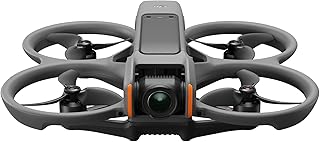DJI Drones for Search and Rescue: Saving Lives from the Sky
DJI drones have become a powerful tool in search and rescue operations, revolutionizing the way we locate missing individuals and respond to emergencies. Their versatility, ease of use, and advanced features make them invaluable assets for first responders.
Here's how DJI drones are making a difference:
1. Rapid Deployment and Aerial Reconnaissance:
* Speed and Agility: Drones can quickly reach disaster zones, bypassing obstacles and accessing difficult terrain. They provide real-time aerial views, giving rescue teams critical situational awareness.
* Wide Area Coverage: Drones can cover vast areas, allowing for a comprehensive search of the affected region. Their aerial perspective helps in locating victims, identifying potential hazards, and coordinating rescue efforts.
2. Advanced Imaging and Data Collection:
* High-Resolution Cameras: DJI drones are equipped with powerful cameras capable of capturing high-resolution images and videos. These visuals help identify potential victim locations and assess the severity of the situation.
* Thermal Imaging: Thermal cameras enable detection of body heat even in challenging conditions, like darkness or dense vegetation. This significantly enhances the chances of finding missing persons.
* Live Streaming: Real-time video transmission allows rescue teams to monitor the search area from a safe distance, facilitating efficient coordination and decision-making.
3. Enhanced Communication and Collaboration:
* Real-Time Data Sharing: Drones can transmit data and footage directly to command centers, providing immediate information for informed decisions.
* Improved Communication: Drones equipped with two-way communication systems allow for direct contact with victims, potentially saving lives.
4. Cost-Effectiveness and Accessibility:
* Reduced Costs: Compared to traditional helicopter search operations, drones offer significant cost savings.
* Ease of Operation: DJI drones are user-friendly and require minimal training, making them accessible to a wider range of first responders.
Specific Applications of DJI Drones in Search and Rescue:
* Missing Person Search: Drones can be used to quickly scan large areas, aiding in the search for missing hikers, boaters, or individuals lost in disaster zones.
* Disaster Response: After natural disasters like earthquakes or wildfires, drones help assess damage, locate survivors, and facilitate relief efforts.
* Water Rescue: Drones can be used to search for drowning victims or to monitor water conditions during floods.
* Wildlife Rescue: Drones can be deployed to locate and rescue injured animals in remote or inaccessible areas.
Challenges and Limitations:
* Battery Life: Drones have limited battery life, requiring frequent recharging.
* Weather Conditions: Wind and rain can affect drone performance and safety.
* Regulations: Operating drones requires adherence to local regulations and airspace restrictions.
* Privacy Concerns: Using drones for search and rescue raises concerns about privacy and data security.
Conclusion:
DJI drones are transforming search and rescue operations, offering a unique combination of speed, agility, and technological advancement. They enable first responders to locate victims faster, assess situations more effectively, and coordinate rescue efforts with greater precision. As technology continues to advance, drones will play an even greater role in saving lives and making the world a safer place.


